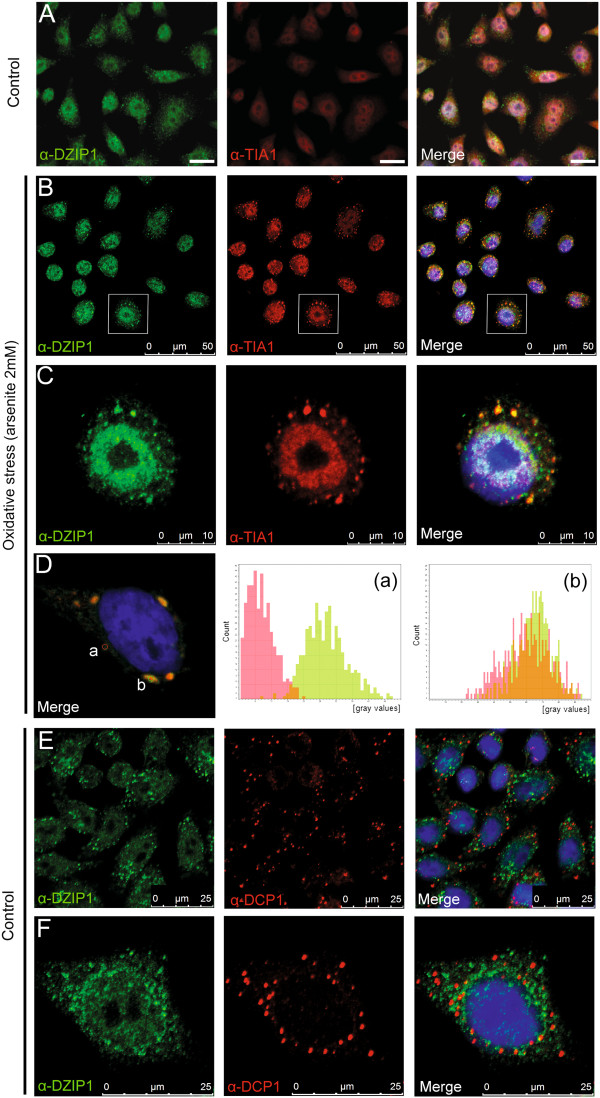Figure 2.

DZIP1 is recruited to stress granules in cells under oxidative stress. (A-B) Indirect immunofluorescence staining was carried out to examine the colocalization of DZIP1 (green) and TIA1 (red) in HeLa cells. Nuclei were counterstained with DAPI (blue). (A) Control cells without arsenite sodium (scale bar: 10 μm) and (B) cells treated with arsenite sodium to induce oxidative stress. (C) Images show magnified sections from B (white boxes). (D) Fluorescence intensities of DZIP1 (green channel) and TIA1 (red channel) were measured on selected regions (a and b) in the merged images (left) of HeLa cells under oxidative stress. The region (a) shows no colocalization of fluorescent signals with higher fluorescence intensity in the green channel than in the red channel. The region (b) shows DZIP1 and TIA1 colocalization with equivalent fluorescence intensities in green and red channels. (E) Indirect immunofluorescence staining of DZIP1 (green) and DCP1 (red) antibody was used to detect colocalization with p-bodies. (F) Detail of colocalization of DZIP1 and DCP1 in a single cell. (B-F) Confocal microscopy.
